
Redear Sunfish
Scientific Name: Lepomis microlophus
Classification: Game Fish
Abundance: Common throughout NC.
A selection of species found in North Carolina.

Scientific Name: Lepomis microlophus
Classification: Game Fish
Abundance: Common throughout NC.

Scientific Name: Orconectes C. erichsonianus
Classification: Nongame Fish - Crustacean
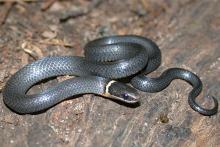
Scientific Name: Diadophis punctatus
Photo Credits: JD Wilson
The ring-necked snake is non-venomous. It feeds on earthworms and salamanders. The yellow or orange ring on its neck contrasts with the dark gray or black back of this snake. Found in the forest, the snake lives within rotting logs.


Scientific Name: Lithobates heckscheri
Classification: Nongame species
Range: State Listed as Endangered
Photo Credit: Todd Pierson

Scientific Name: Ambloplites cavifrons
Classification: Game Fish
Abundance: Found primarily in the Tar and Neuse River drainages of NC.

Scientific Name: Percina rex
Classification: Federally Endangered, State Endangered
Abundance: Extremely rare (found only in brown area)
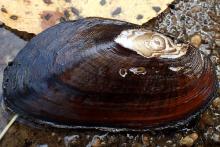
Scientific Name: Elliptio roanokensis
Classification: State Special Concern
Photo Credits: Michael Perkins
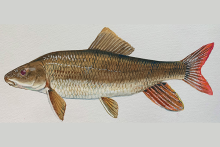
Scientific Name: Moxostoma robustum
Classification: State Endangered
Abundance: Rare (dark area)

Scientific Name: Ambloplites rupestris
Classification: Game Fish
Abundance: Common in many of the coolwater rivers in western NC.
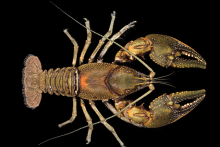
Photo Credit: Michael Perkins
Scientific Name: Cambarus P. hobbsorum
Classification: Nongame Fish - Crustacean
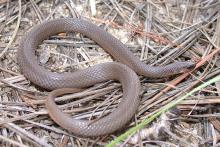
Scientific Name: Haldea striatula
Photo Credits: JD Wilson
Living underground in rotting logs, this non-venomous snake eats earthworms and soft-bodied insects. The snake is brown with a light-colored belly. The babies are usually darker than the adults and have a more distinct neckband.


Scientific Name: Bonasa umbelius
Classification: Game Species
Abundance: Found in western NC; northern Piedmont
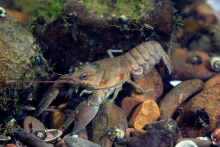
Scientific Name: Orconectes P. rusticus
Classification: Non-native